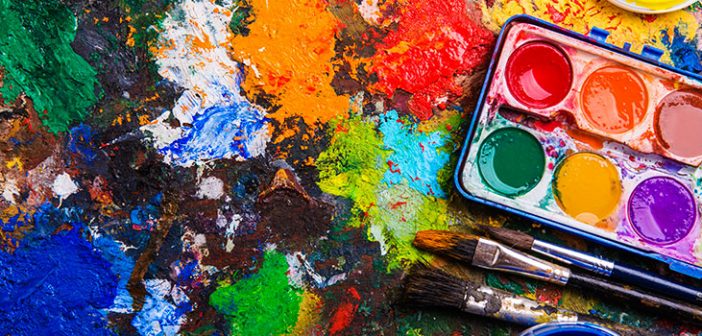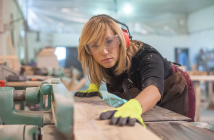Painting by watercolor may be one of the most delightfully unpredictable ways to express yourself. With the right paper, rich color, and a little water, a blank canvas can become a place where brushstroke and bold color come together in beautiful flights of fancy.
Expressing yourself through watercolor can be as controlled or free spirited as you want it to be. All it takes is a little practice, and a pinch of imagination.
Tips & Tricks While Playing With The Paint
Be Friends With The Water
The key ingredient that makes the difference between a highly defined landscape painting and a fluid, freeform explosion of color is water. Water can be your best friend or worst enemy if you spend enough quality time with it.
Experiment With Technique
Change up your technique and your paper will be popping with contrast, texture, depth, and striking color in no time!
- Wet on Wet – Brush your canvas with a thin sheen of water. Start dropping bits of paint onto your canvas and watch it stretch in a crystal like way across the paper in varying degrees of richness.
- Wet on Dry – Keep your paper dry, swirl your brush around in a good mix of color and water, then apply it to the paper to achieve rich, controlled color wherever you like on your canvas.
- Dry Brush – Water gets only a minor part in this production as you use just enough of it to pick up color onto the brush, then move it across the dry paper canvas for ultimate texture.
- Dry on Wet – Cover your paper completely with one color for the background. Then, while the canvas is still wet, dip your brush in some color, wipe off excess water, and paint on top of the wet surface with whatever strokes you prefer.
- Ombre Effect – Use the wet on wet technique to pre-wet your paper, then tilt your painting surface up a bit and apply brush strokes of rich color. Watch it run down to form a beautiful ombre effect.
- Black Ink on Wet – Make sure to use a waterproof ink pen to prevent smudging. First, use a black ink pen to create the lines of your vision. Once complete, fill in the lines with your favorite watercolors.
Get Your Gear On
You’ll need some basics before your painting adventure begins.
- Paint – Of course you’ll need paint, but what format will you choose: powder, liquid, watercolor pens, or pencil? Watercolor pencils are easy to use and travel well. Palettes come with color nicely organized and separated. Liquids allow for great variation in richness of color.
- Watercolor Paper – Yes you can paint on regular paper and watch the water drip off! Or, you can grab some watercolor paper and watch color come to life as the thick blank page soaks up as much color as you want to give it.
- Brushes – Go for traditional or built in water brushes. The choices are endless in terms of variety of brushes. As long as you have one decent one, your watercolor party can get started.
- Flat work surface – Since water is the key, you’ll need to keep your watercolor paper flat. Taping the edges to a portable surface, such as a light board or cardboard box, is a good thing to do as well.
Paint… Paint… And Paint Some More
While you may feel a little out of control at first, paint for a short while and you’ll find your painting groove. Don’t be afraid to play around with it, exploring the endless exciting ways water and paint can dance around with each other to create vibrant watercolor art.
The great advantage of watercolors is that they’re easy to store, and minimally messy. Paint outside, paint at the kitchen table, or invest in a travel watercolor palette and take it on the go. There really is no limit in finding opportunities to express yourself through watercolor.





Its True, Thanks for information about Tips & Tricks While Playing With The Paint
I must say that I found https://pro-academic-writers.com/blog/argumentative-essay-topics recently and it was really helpful. I managed to find out more about argumentative essay topics.
Painting is one of those things which enhance your thing power and creativity, enable you to show your imaginations to others through paint and brush.